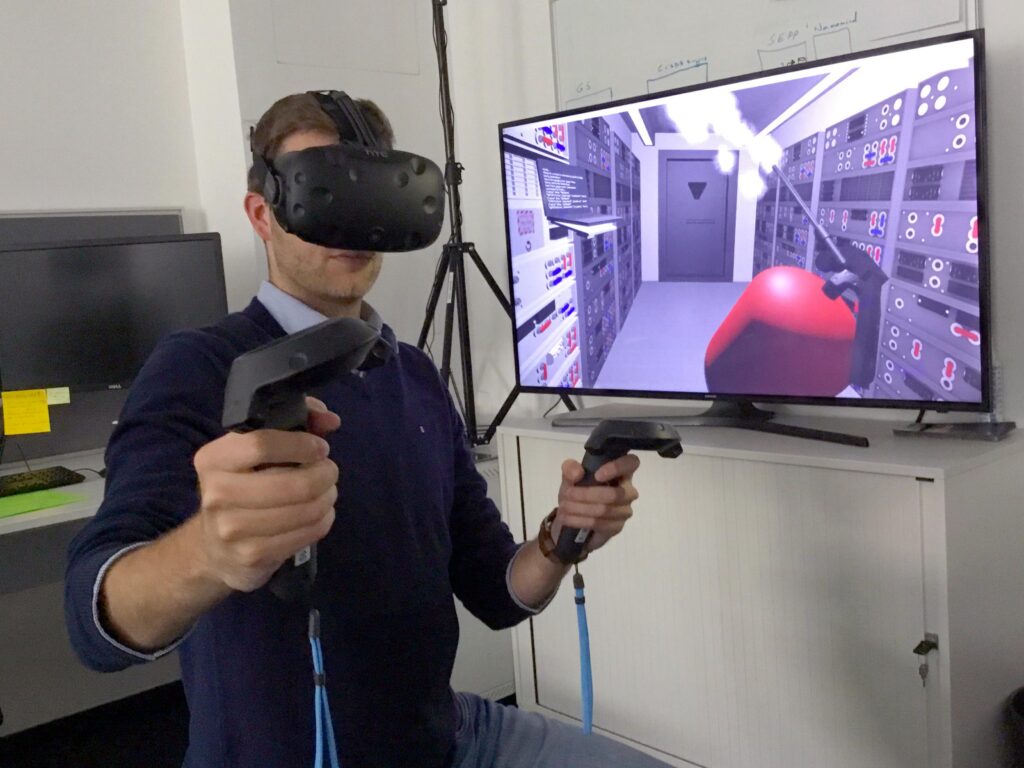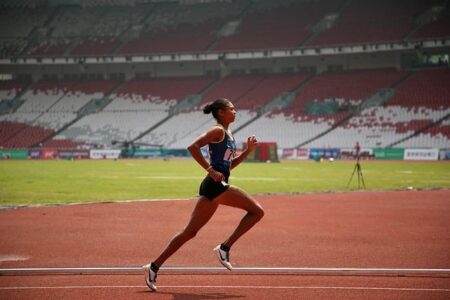In a rapidly evolving landscape where technology and athletics increasingly intersect, virtual reality (VR) is emerging as a groundbreaking tool in combat sports training. The latest mini-review published in Frontiers sheds light on the advancements in VR technology specifically designed to enhance performance for fighters. From immersive simulation environments to real-time feedback systems, these innovations are redefining traditional training methods, offering athletes new ways to sharpen their skills, improve reaction times, and gain strategic insights without stepping into the ring. This article explores the key developments highlighted in the review and offers a perspective on how VR is poised to transform the future of combat sports.
Emerging Virtual Reality Technologies Transforming Combat Sports Training
Cutting-edge virtual reality (VR) solutions are rapidly redefining the landscape of combat sports training by offering immersive, adaptive, and data-driven experiences. Trainers and athletes now harness real-time motion capture combined with AI-powered analysis to replicate complex fight scenarios with unprecedented precision. These technologies enable users to rehearse techniques, improve reaction times, and refine tactical decision-making without the physical exhaustion or injury risks associated with traditional sparring. Notably, advanced haptic feedback systems provide nuanced sensations of impact and resistance, allowing fighters to develop timing and accuracy in a fully controlled virtual environment.
Furthermore, VR platforms embrace multisensory integration to engage athletes’ perceptual and cognitive faculties more comprehensively. Benefits include:
- Enhanced spatial awareness through 360-degree environments simulating diverse fighting arenas
- Customizable opponent AI that adapts to the user’s skill level and fighting style
- Performance tracking dashboards delivering actionable insights on stamina, precision, and strategy optimization
- Remote training capabilities connecting athletes and coaches across geographical boundaries
| Technology | Key Feature | Impact on Training |
|---|---|---|
| AI-Powered Opponents | Adaptive difficulty | Improves tactical flexibility |
| Haptic Feedback Gloves | Simulated touch and resistance | Enhances precision and timing |
| Motion Capture Integration | Real-time form correction | Reduces injury, optimizes technique |
| Multisensory VR Arenas | Environment realism | Boosts situational awareness |
Detailed Insights into VR-Driven Cognitive and Physical Performance Gains
Recent advancements in virtual reality (VR) technology have ushered in transformative approaches to enhancing both cognitive and physical capabilities in combat sports athletes. VR platforms simulate high-pressure combat scenarios, facilitating improved decision-making speed and spatial awareness by immersing users in controlled, yet realistic, environments. This immersive training cultivates neural plasticity, accelerating the development of strategic thinking and reaction time even outside the traditional gym setting. Moreover, VR’s capacity to integrate biofeedback provides athletes and coaches with quantifiable data on focus, stress management, and fatigue levels, enabling targeted cognitive conditioning.
On the physical front, VR enables precise motor skill refinement by replicating diverse combat techniques through motion tracking and real-time corrections. This results in enhanced muscle memory and coordination without the wear and tear of constant sparring. Key benefits highlighted across recent studies include:
- Injury risk reduction: Virtual sparring decreases physical strain while maintaining high-intensity stimulus.
- Endurance optimization: Simulations can be tailored to systematically push cardiovascular thresholds.
- Customizable training regimens: VR facilitates adaptability to individual athlete needs and progression speeds.
| Performance Area | VR Impact | Measured Outcome |
|---|---|---|
| Cognitive Flexibility | Scenario variability | +25% faster tactical responses |
| Physical Conditioning | Motion-corrected drills | +15% accuracy in strikes |
| Stress Management | Biofeedback integration | 30% reduction in cortisol levels |
Challenges and Ethical Considerations in Deploying VR for Combat Athletes
Integrating virtual reality (VR) into combat sports training raises significant challenges that extend beyond technological hurdles. One of the primary concerns involves data privacy and security, as the VR platforms often collect sensitive biometric and behavioral data. Athletes and coaches must be assured that their performance metrics are protected from misuse or unauthorized access. Additionally, the risk of overreliance on simulated environments raises questions about the potential disconnect between virtual training and real-world performance nuances, such as unpredictable opponent behavior or environmental variables that VR cannot fully replicate.
Ethical considerations also play a vital role, particularly in ensuring equitable access to these advanced tools. The high costs and technical requirements of state-of-the-art VR systems could widen the gap between athletes in well-funded programs and those with limited resources. Moreover, concerns about psychological impacts-including possible desensitization to violence or increased risk of motion sickness-demand rigorous oversight. The table below summarizes key ethical and practical challenges informing responsible VR deployment in combat sports:
| Challenge | Potential Implication | Consideration |
|---|---|---|
| Data Privacy | Exposure of sensitive athlete information | Robust encryption and informed consent |
| Access Inequality | Performance disparity among competitors | Develop affordable solutions and partnerships |
| Realism Limitations | Inadequate simulation of live combat dynamics | Hybrid training models combining VR and live drills |
| Psychological Effects | Possible desensitization or VR-induced discomfort | Regular mental health assessments and guidelines |
Expert Recommendations for Integrating VR into Routine Combat Sports Regimens
Leading experts emphasize a strategic approach to weaving virtual reality into daily combat sports training, tailoring the technology to complement physical drills without disrupting the athlete’s rhythm. Emphasizing the role of VR as a supplementary tool, recommendations focus on incremental integration-where athletes engage with immersive scenarios such as simulated fight situations and reaction drills for brief, targeted sessions. Coaches are encouraged to align VR modules with specific skill goals, such as enhancing spatial awareness or decision-making speed, ensuring that virtual exercises mirror real-world challenges precisely.
To maximize efficacy and safety, trainers suggest adhering to key principles:
- Progressive complexity: Gradually increasing scenario difficulty to match an athlete’s evolving skill level.
- Balanced scheduling: Combining VR with traditional conditioning to avoid cognitive fatigue and maintain physical readiness.
- Real-time feedback integration: Utilizing VR analytics to refine technique and strategy dynamically.
- Customization: Designing personalized training modules based on individual weaknesses and strengths.
| Aspect | Expert Tip |
|---|---|
| Session Duration | 15-20 minutes to prevent overexertion |
| Training Frequency | 2-3 times per week alongside physical drills |
| Equipment Setup | Ergonomic gear for rapid movement and safety |
| Performance Metrics | Use VR-generated data for targeted skill improvements |
Final Thoughts
As virtual reality technology continues to evolve at a rapid pace, its applications in combat sports are proving to be both innovative and transformative. This mini-review highlights how VR is not only enhancing athletes’ training regimens but also redefining performance optimization through immersive, data-driven environments. Looking ahead, the integration of VR could revolutionize athletic preparation and injury prevention, offering fighters unprecedented opportunities to refine their skills safely and effectively. As research progresses, the combat sports community-and the tech industry alike-will be watching closely to see how these advancements translate from virtual arenas to real-world victories.





